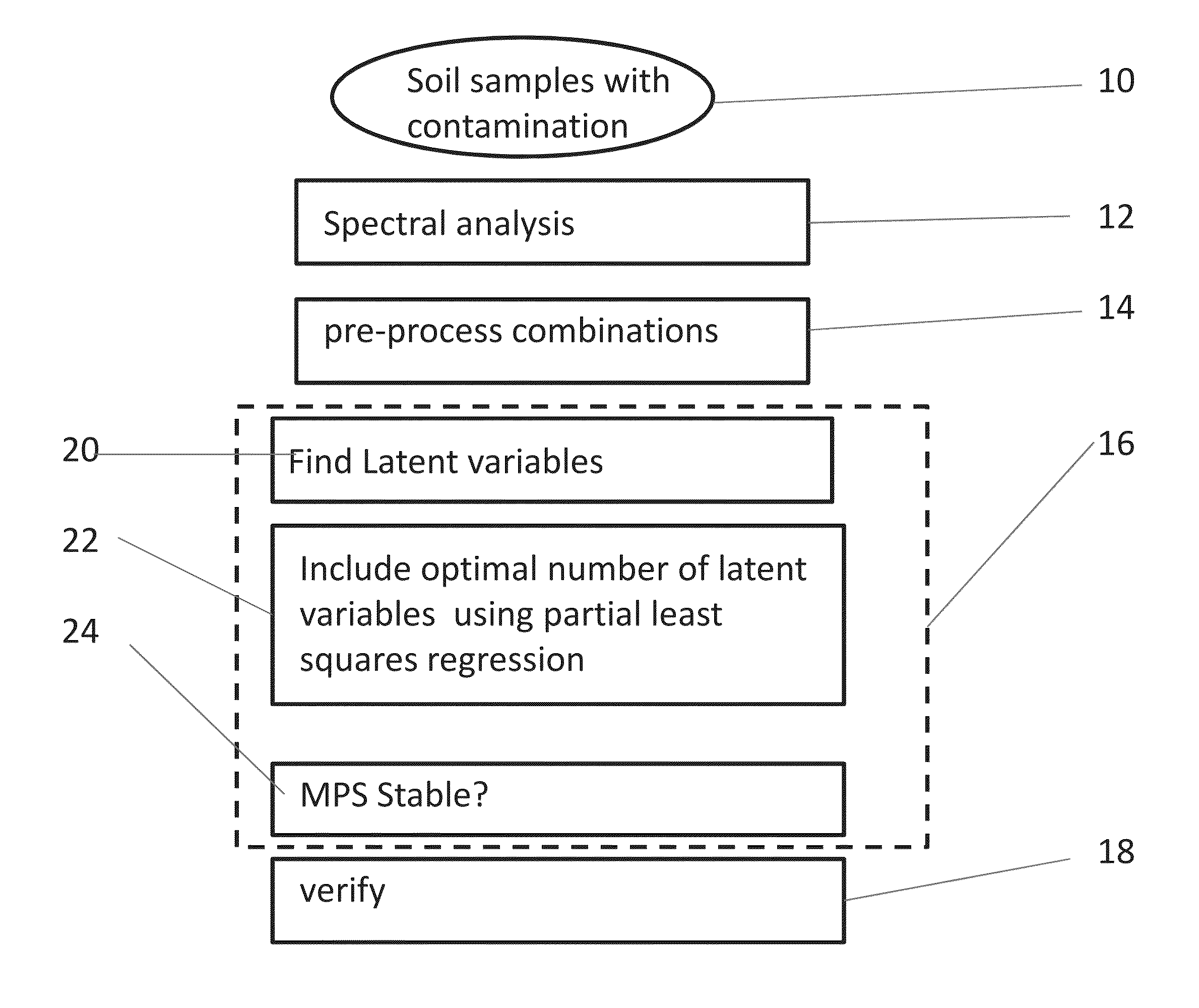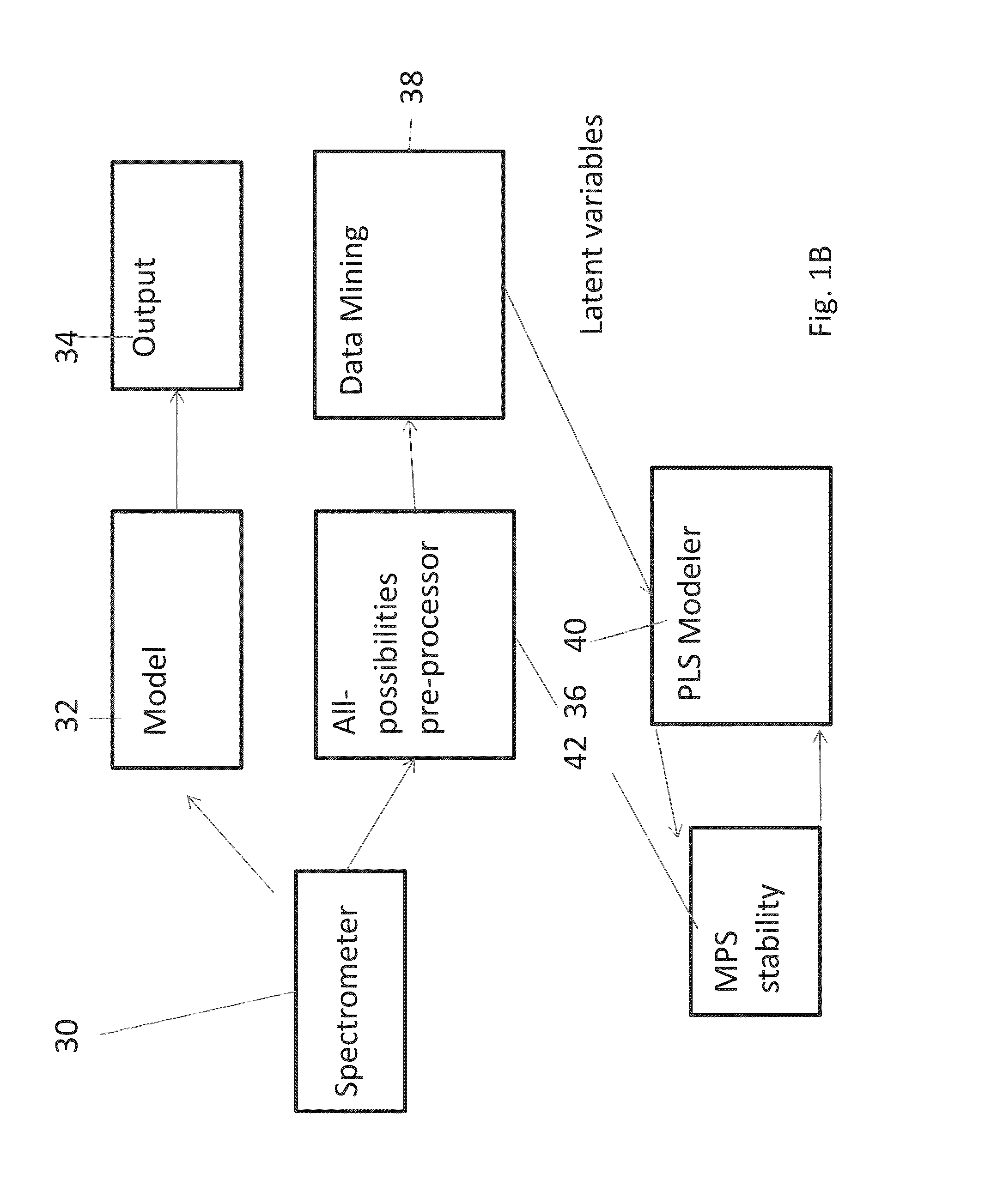Quantitative assessment of soil contaminants, particularly hydrocarbons, using reflectance spectroscopy
a technology of reflectance spectroscopy and hydrocarbons, applied in the field of quantitative assessment of hydrocarbon contamination in soil using reflectance spectroscopy, can solve the problems of extreme debilitation, loss of balance, seizures and lethality,
- Summary
- Abstract
- Description
- Claims
- Application Information
AI Technical Summary
Benefits of technology
Problems solved by technology
Method used
Image
Examples
Embodiment Construction
[0040]The present invention, in some embodiments thereof, relates to quantitative assessment of hydrocarbon contamination in soil using reflectance spectroscopy.
[0041]The present embodiments adapt the quantitative methodology referred to above, by use of the above-mentioned all-possibilities approach, and develop steps in which hydrocarbon contamination in soils can be determined rapidly, accurately, and cost effectively solely from reflectance spectroscopy. Artificial contaminated samples are analyzed chemically and spectrally to form a database of 5 soils contaminated with 3 types of PHC, creating 15 datasets of 48 samples each at contamination levels of 50-5000 wt % ppm. A brute force preprocessing approach combines 8 different preprocessing techniques at all possibilities, resulting in 120 different mutations for each dataset. A computing system that supports the all-possibilities approach was developed for this study and is discussed below. A new parameter for evaluating model ...
PUM
| Property | Measurement | Unit |
|---|---|---|
| wavelength range | aaaaa | aaaaa |
| wavelength range | aaaaa | aaaaa |
| reflectance spectroscopy | aaaaa | aaaaa |
Abstract
Description
Claims
Application Information
 Login to View More
Login to View More - R&D
- Intellectual Property
- Life Sciences
- Materials
- Tech Scout
- Unparalleled Data Quality
- Higher Quality Content
- 60% Fewer Hallucinations
Browse by: Latest US Patents, China's latest patents, Technical Efficacy Thesaurus, Application Domain, Technology Topic, Popular Technical Reports.
© 2025 PatSnap. All rights reserved.Legal|Privacy policy|Modern Slavery Act Transparency Statement|Sitemap|About US| Contact US: help@patsnap.com



